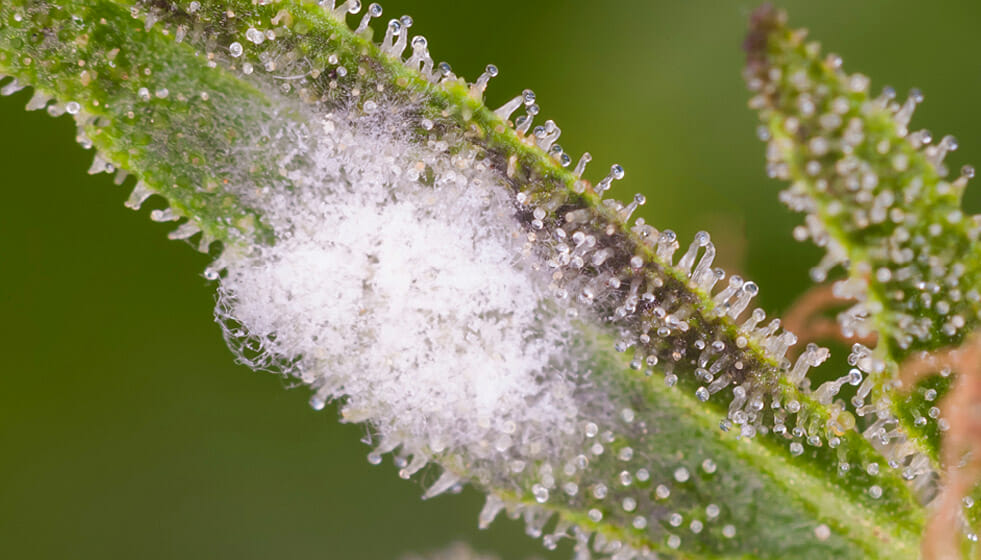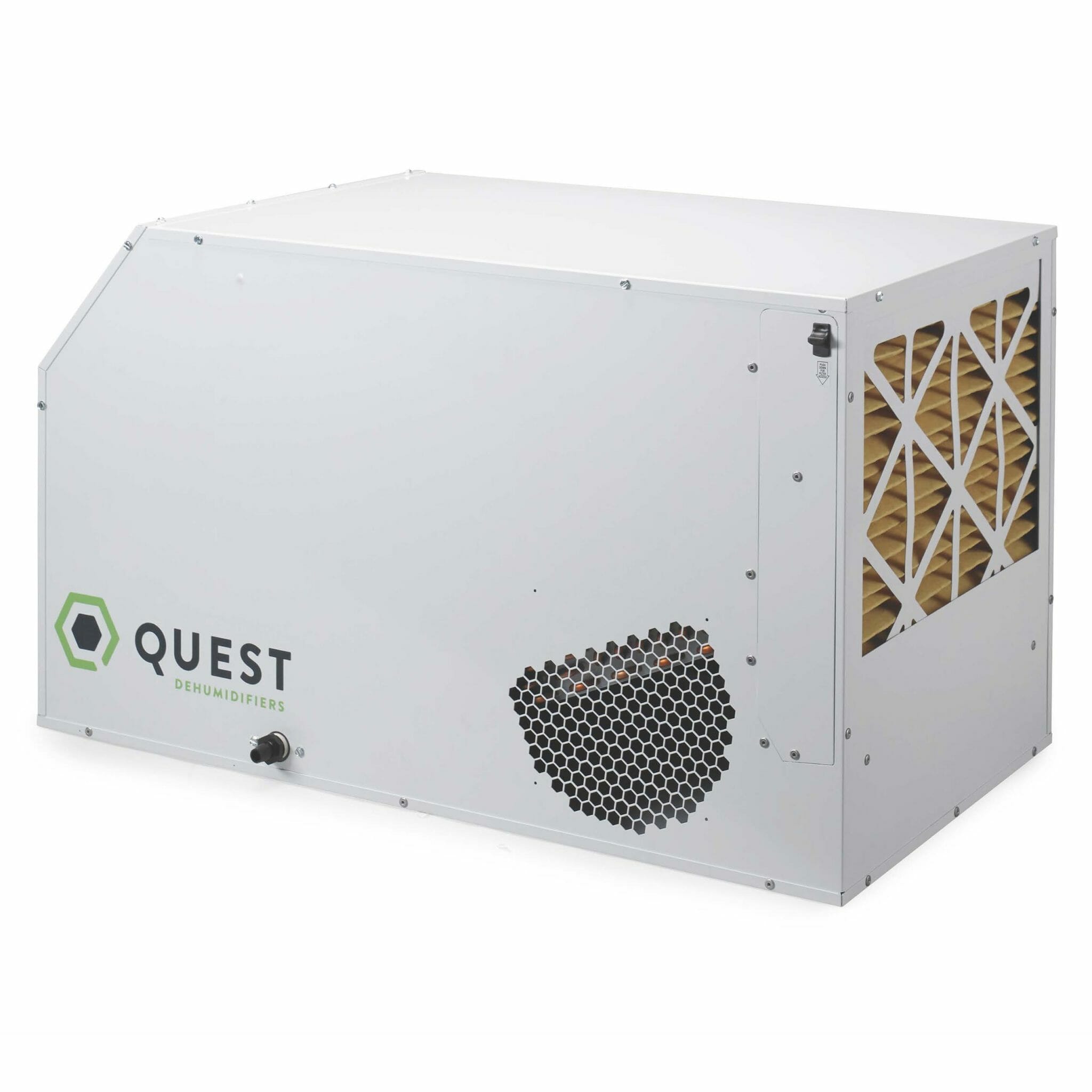Keeping Bud Rot at Bay with Humidity Control
1. Keep Air Moving
Air movement is key to keeping a healthy crop—both above and below the canopy.
“That’s definitely a big factor with bud rot. Stagnant air will allow for microclimates to flourish between leaves and buds,” Bonelli said. And proper airflow does more than just keep problems like bud rot from developing—it also increases the overall health of your plants.
According to one growing advice site, “as air blows over the leaves, it carries away moisture released during transpiration,” which is the process by which plants change water to vapor. “This allows your plants to drink more water (and pull in more nutrients) at the roots.”
2. Manage Your Canopy
Air movement above and below the canopy is important, but so is the canopy itself.
“Make sure you’re set up so that there’s not leaf-on-leaf crowding,” Bonelli said. “Given that transpiration releases water vapor from the underside of leaves through the stomata, a canopy that’s too dense with overcrowding can create microclimates that promote the propagation of powdery mildew and Botrytis even if you keep your overall humidity low.”
3. Don’t Entirely Count on HVAC for Dehumidification
“I’ve been in the field and seen cultivators who have all-in-one systems they think can handle the dehumidification load,” Bonelli said, “but more often than not what are called all-encompassing systems still need a separate dehumidification system, either overhead or portable.”
The fact is, HVAC controls are often sufficient for commercial or residential environments, but the moisture loads are much different in an indoor grow facility or greenhouse.
“A dedicated humidity control system means your AC can do what it’s intended to do, which is to work on temperature control,” Bonelli said.
4. Avoid Under-Sizing Your Dehumidification Needs
Sizing a commercial dehumidification system correctly can mean the difference between maximizing yields and a negative return on investment.
“Always be slightly over-sized in your dehumidification plan. It’s better than being undersized,” Bonelli said. If you need help to size your dehumidifier, there are a number of online resources out there that can help, but a dehumidification expert can also help you size your grow.
To calculate your dehumidification needs, expect that plants will transpire about 97 percent of the water they receive. So if you water 30 plants at a ½ gallon of water per day per plant, you should expect to need to remove 120 pints per day or about 15 gallons per day.
5. Seal Your Room
“The key in a lot of these situations is having a sealed room and building,” Bonelli said. “Having dehumidification in a facility where there’s a lot of air exchange, that’s like taking all of your environmental controls, even your CO2 and AC, and just putting it outside on the curb. It’s a waste of resources.”
“You can size your grow room for the amount of water that’s going into your system, but it’s hard to pinpoint your needs if you have a lot of external humidity coming in,” he said, especially in greenhouses.
A few specific areas Bonelli recommends growers check in greenhouse grows especially during high external humidity periods and at night:
- Be sure to keep any ventilation closed.
- Keep louvers closed.
- If there are sides that you can draw up, keep them closed.
- Be sure the ground is sealed or covered by a vapor barrier.
6. Keep Your Temperatures in Check
When it comes to bud rot and environment, temperature is crucial.
“Generally, you should aim to maintain temps above 68-70 degrees Fahrenheit, as warmer temps can help facilitate that lower humidity,” Bonelli said.
The importance of temperature control is important for all growers. Particularly, it is relevant for outdoor and greenhouse growers when it comes to preventing bud rot. When temperatures drop at night, the relative humidity can rise dramatically. If this persist for too long, the probability of bud rot increases.
Greenhouse growers need to do everything they can to keep the space warm. Outdoor growers can improve their outcomes by covering plants at night with a porous material to keep them warm.
Along the same lines, many outdoor growers may need to consider seasonality as it relates to bud rot. As the combination of large buds near the end of harvest and increasingly cool nights can spell disaster for growers. For this reason, many growers choose to push their harvest up so they’re starting earlier in the season and finishing earlier in the fall.
Bonelli provided this example:
- Let’s say you have a greenhouse with nighttime conditions of 65 percent relative humidity at 65 degrees Fahrenheit.
- Raise the greenhouse’s temperature by 7 degrees to 72 degrees Fahrenheit, the relative humidity will drop to about 49 percent.
“Now the key to remember is that the moisture didn’t go anywhere; it’s still there. We just changed the temperature and the humidity is relative to the degree of change,” Bonelli said. “For each degree Fahrenheit of change in temperature there’s roughly a 2 to 2.5 percent change in relative humidity.”
Regardless of where you grow, keeping your humidity in check is key—and that means in every stage of the grow. As competition increases, and the quality of crop matters just as much as volume, many growers are increasingly relying on sophisticated climate controls to manage a longer cure for better developed aromas and flavor profiles, as well.
“You don’t want mold spores in those situations, either,” Bonelli said.
POWERFUL & EFFICIENT COMMERCIAL DEHUMIDIFIERS FOR THE CANNABIS INDUSTRY
Published on Nov 07 2017
Last Updated on Feb 26 2023
Categories: Agriculture, Bud Rot, Cannabis Mold, Humidity
Tags: growing expertise, The Cannabist





